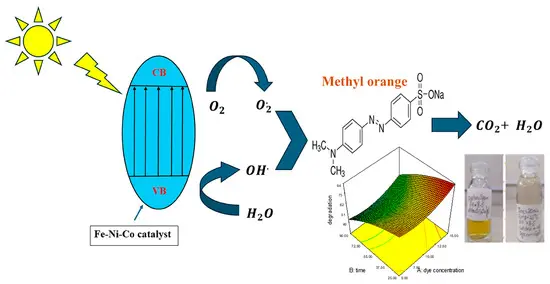Why is methyl orange powder called "acid-base sentry" in the laboratory?
Overview of Methyl Orange powder
In the glass cabinet of the chemistry laboratory, there are always several small bottles filled with Methyl Orange powder, and the words "methyl orange" are printed on the label. It looks unremarkable-it has neither metallic luster nor romantic legend of "acid-base discoloration" like phenolphthalein, but if you ask any student or researcher who has done acid-base titration experiments, "Which' old buddy' has stayed with you for the most nights?" There is a high probability that it will have its name in the answer.
Today, let's talk about this "honest man" in chemistry: why does it become a "acid-base sentry" in the laboratory? What stories has it experienced from birth to application? What role does it play quietly in our lives?
What is Methyl Orange powder?
Methyl Orange is an orange powder, slightly soluble in water and easily soluble in hot water, and is prepared by diazotization of p-aminobenzenesulfonic acid.
It is used as an indicator for acid-base titration. It exists in acidic solution, and methyl orange is yellow in neutral or alkaline solution. The pH value of the discoloration range is 3.1 ~ 4.4. The application of methyl orange has been used in laboratory and industrial and agricultural production for pH control of chemical reactions and acid-base titration analysis of chemical products and intermediates. In the printing and dyeing industry, the residual pH on the woven fabric should be determined by indicator and washed to make the woven fabric neutral. If the cloth has acidity, dyeing or printing with reactive dyes will affect its hair color and fastness. The disadvantage of methyl orange indicator is that it is difficult to identify the yellow and red color, and it has been replaced by a wide range of indicators. It is also a dye, which can be used for printing and dyeing textiles.

First sight of methyl orange: the "color code" in a bottle of powder
People who come into contact with Methyl Orange powder for the first time are often deceived by its simplicity. It is usually orange-yellow or orange-red fine crystal powder, which smells nothing special and looks not much different from the seasoning powder in the kitchen. But when you put it in the solution, the magic begins-as the pH value of the solution changes, its color will switch like a palette: red in acidic conditions, orange near neutrality, and yellow in alkaline environments.
This color-changing ability of have it both ways stems from its unique chemical structure. Its molecules will "deform" in different acid-base environments: when the solution is acidic (pH < 3.1), the molecular structure tends to "shrink tight" and the absorption spectrum tends to be blue-green, and what we see is the complementary color-red; When the solution becomes alkaline (pH > 4.4), the molecular structure "stretches and relaxes", and the absorption spectrum turns to red, and we see yellow. In the intermediate pH range of about 3.1-4.4, it will appear orange between red and yellow, which is one of the reasons why it is called "methyl orange" ("orange" means its transition color).
From laboratory to classroom: the "classic stage" of methyl orange
If you have done "titration experiment with strong acid and alkali" in middle school chemistry class, you must be familiar with it. Methyl orange is your "eye"-the critical point when the solution gradually changes from red to orange and then to yellow is the "titration end point": the moment when the acid and alkali react completely. Why choose methyl orange? Because it is "responsive" and "clearly defined". Compared with other indicator products, its color change range is more suitable for neutralization reaction of strong acid and alkali. Imagine: when you drop the last drop of test solution, the solution instantly jumps from red to orange, and then gently turns yellow-that "jumping point" is the end point you are looking for, and the error can be controlled within a very small range. Even better, its "color change speed" is very fast. Unlike some indicators, which need to wait a few minutes to stabilize, Methyl Orange powder can give feedback at the moment when the acid-base environment changes, which is very important for experiments that need to control the reaction time accurately. Besides titration experiment, methyl orange is also a good helper to study "buffer solution". Buffer solution can resist the change of pH caused by the addition of a small amount of acid and alkali, and its color change can directly show this "resistance"-for example, when methyl orange is added to the buffer system, you will find that no matter how little acid or alkali is added, the color of the solution only fluctuates slightly near orange, which is a vivid embodiment of the buffering effect.

The "invisible assistant" of industry and life: not only in the laboratory
You may not expect that this "star" in the laboratory is still quietly active in the corner of industrial production and daily life.
1) In the textile printing and dyeing industry, Methyl Orange powder used to be an important tool for early pH monitoring. When dyeing cloth, the adsorption capacity of different fibers to dyes is greatly influenced by pH value: for example, wool is evenly colored under weak acid conditions, but it is easy to be damaged in alkaline environment. Workers will add a small drop of methyl orange solution to the dye vat, and adjust the pH value in real time by observing the color change to ensure that the color of each batch of cloth is consistent. Although there are more sophisticated electronic pH meters now, methyl orange is still regarded as a "spare tire player" in some small workshops or emergency tests.
2) The field of food processing also has its figure-but it is not directly added to food! When making jam and juice, it is necessary to control certain acidity to ensure the taste and shelf life. The quality inspector will use the diluted methyl orange solution for rapid detection, and of course, the methyl orange residue in the final product will be strictly controlled outside the safe range.
3) Less popular but interesting application is in sewage treatment. If the pH value of wastewater discharged from some factories is too high or too low, it will corrode pipelines or endanger aquatic organisms. The staff will drop methyl orange after sampling, and quickly judge the approximate acidity and alkalinity of wastewater by color, and then decide whether neutralization is needed. Although this "soil method" is not as accurate as the instrument, it is still an economical and practical "first line of defense" in areas with insufficient equipment.
The meaning of methyl orange goes far beyond discoloration.
Many people think that methyl orange is just a bottle of color-changing powder, but its existence actually reflects an important logic of the development of chemistry: solving complex problems with simple tools.
In the early stage of chemical analysis, scientists need a method to judge the properties of solutions quickly and intuitively. Colorimetry is one of the most primitive and practical techniques. The birth of methyl orange is the product of this demand-it doesn't need complex coordination reaction like some metal ion indicators, and it doesn't need power supply and calibration like later electronic sensors. It only needs a drop of solution and a few seconds of observation to give key information. This "low cost and high efficiency" feature makes it a "stepping stone" for chemical popularization and industrial development.
More importantly, it taught us the importance of "observation". In chemical experiments, data is of course important, but the color change, precipitation and bubble generation seen by the naked eye are often the first step to find the problem. Chemistry is not a cold number, but a process that you need to see and feel with your heart.
Pay attention to these details when using.
Our company provides high-quality Methyl Orange powder with stable performance for you to test and use. Of course, this "old buddy" also has his own "temper", so you need to pay more attention when using it:
1) Don't use it as a "universal indicator": the discoloration range of methyl orange is narrow (pH3.1-4.4), and it is only suitable for systems with strong acid and alkali or strong acidity. If it is weak acid and weak base titration, its discoloration is not obvious, so other special indicators should be used at this time.
2) Don't be too greedy: adding too much will make the color of the solution too dark, but you can't see the gradual change process clearly.
3) Store away from light: Although it is relatively stable, it may slowly decompose after long-term exposure to sunlight, resulting in insensitive color change. Laboratories usually keep it in a brown reagent bottle and keep it in the shade.
4) Safety first: Although it is a commonly used reagent, methyl orange powder may cause slight irritation if inhaled or contacted with skin. Remember to wear gloves and masks when taking them, and cover the bottle cap in time after use.
Conclusion: Extraordinary in the Ordinary
Methyl Orange has no gorgeous appearance, but it solves problems in the most direct way; It was born more than 100 years ago and is still glowing in the laboratory. It may not be the "star molecule" in the headlines, but it is the most reliable "old friend" of every chemistry learner and researcher. The next time you walk into the laboratory and see that small bottle marked "methyl orange", you might as well stop and have a closer look. It contains not only a bottle of powder, but also a tender memory about observation, rigor and the close connection between chemistry and life. And this extraordinary in the ordinary may be the most touching place of science.
Xi'an Faithful BioTech Co., Ltd. combines cutting-edge production technology with comprehensive quality assurance to provide high-quality Methyl Orange powder that meets international pharmaceutical standards. Our commitment to excellent, competitive prices and technical support makes us the preferred partner of global healthcare providers and researchers. Please contact our technical team in sales11@faithfulbio.com to find out how our products can improve your formula.
This is a list of the names of the core scientific research documents that I referred to and relied on in the process of writing a soft article. These documents provide solid scientific evidence for the efficacy and mechanism mentioned in this paper.
《Methyl Orange: Synthesis, Properties and Analytical Applications》
《The Role of Acid-Base Indicators in Titration Experiments: A Case Study of Methyl Orange》
《Environmental Detection of pH Using Methyl Orange as an Indicator》
《Photocatalytic degradation of methyl orange using TiO₂ nanoparticles under UV and visible light irradiation》
《Adsorption of methyl orange from aqueous solution by activated carbon prepared from agricultural waste: Equilibrium, kinetics and thermodynamics studies》
《Analytical Chemistry》(edited by Wuhan University, Higher Education Press)
(Classic analytical chemistry textbook, including the chapter of acid-base indicator, explains in detail the discoloration principle, pH application range and titration application of methyl orange)
《Inorganic Chemistry》 (edited by Beijing Normal University, Higher Education Press)
(It involves the basic theory of the relationship between the structure of azo dyes and acid-base indicators, and explains the relationship between the molecular structure of methyl orange and the color change)
《Instrumental Analysis 》(edited by Zhu Minghua, Higher Education Press)
(Some chapters compare the difference between acid-base indicator and instrument detection method, and mention the practicability of methyl orange in rapid detection.)



